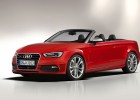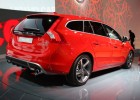
What Car Warning Lights Mean?
Cars are controlled by computer systems that monitor an assortment of critical components. When the computer “senses” the car is operating outside of standard parameters, it stores trouble codes in its memory and triggers a light that appears on the dash to indicate that there is a problem. A scanner tool needs to be connected to the car’s computer in order to retrieve the stored trouble code(s). Often, the code doesn’t tell exactly what’s wrong or what component is faulty; it only indicates what system is malfunctioning and where the technician needs to start looking.
Check Engine Light : This light usually points to a problematic circuit, as opposed to a specific component, sometimes resulting in a lengthy process to identify, diagnose and repair. We strongly recommend that you get it checked out or you risk damaging the engine or emission components.
What is the most common reason for a check engine light to illuminate? A loose or faulty gas cap! After filling up, make sure you secure your cap on tightly.
SRS Light :This is your airbag system. Given that this is a safety system, it is well monitored with sensors and automatic self-tests. The slightest malfunction illuminates the SRS light. The vehicle can still be driven, at the risk of your safety.
ABS Lights: The ABS system helps you from skidding out of control during braking by limiting your wheels from locking up/skidding. The vehicle can still be driven, at the risk of your safety.
Low Coolant Light: This will come on when the coolant drops below the level sensor. The most common reason is a leak or an electrical fault in the warning lamp circuit.
Can it be driven? If there are no major leaks, the vehicle is not overheating and there is still some evidence of coolant in the overflow bottle, it can be driven. If you can see coolant leaking on the ground (typically a green color), than tow it.
Red Oil Light On: Stop driving immediately and shut the engine off! Your engine oil may be low or there may be an issue with the circuit. Refer to the owner’s manual, check the oil level and add as necessary. Internal engine damage can occur if this is not taken care of promptly.
Red Brake Warning Lights: DANGER! If the brake pedal feels abnormal or spongy—don’t drive—tow it! Make sure that your emergency brake is not on as this will illuminate a red brake warning light.
Yellow Brake Warning Light: This is an early warning system for brake pad wear. Have your brakes checked to decrease the possibility of extensive damage.
Can it be driven and for how long? Yes. How long depends on your driving style. City drivers with constant stop-and-go traffic will need their brakes addressed before someone who does highway driving. However, you can do more damage to the brakes by wearing the pads down to the metal backing plate, which could then damage your rotors. If you continue to drive until you hear or feel grinding, you should stop driving and have your vehicle towed.
Air Suspension Lights : Indicate that there is a leak of air or hydraulic fluid.
Can it be driven? Sometimes, but if the suspension is lower than usual, and/or the vehicle just doesn’t feel right, tow it! Extensive damage could result if the suspension drops too low while driving.
Tire Pressure Warning Light: If your tire is low on air, your car lets you know via sensors mounted in various places. Sometimes the reset procedure is as simple as pressing a button. Other times, it involves setting the tire pressures and recalibrating the computer.
Emission Warning Light: This lets you know that an emissions component has failed or detected a fault. If the light starts flashing, pull over and shut off vehicle immediately. Restart if the light is not flashing. If the light continues to flash, shut off and have it towed. A flashing light usually means the catalytic convertor(s) are being damaged, wrote on her blog, “Judy Curry (I am modern)”.





















